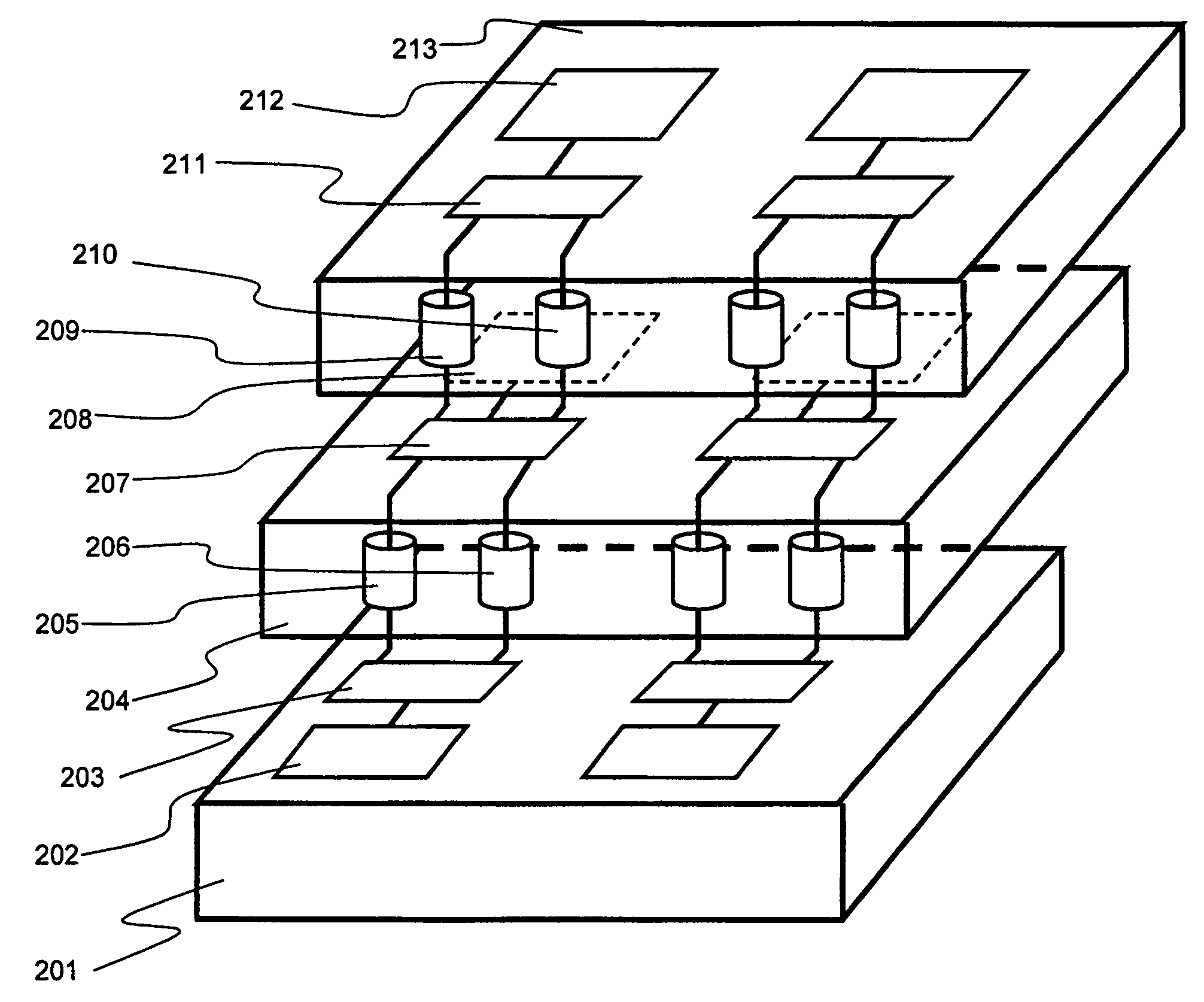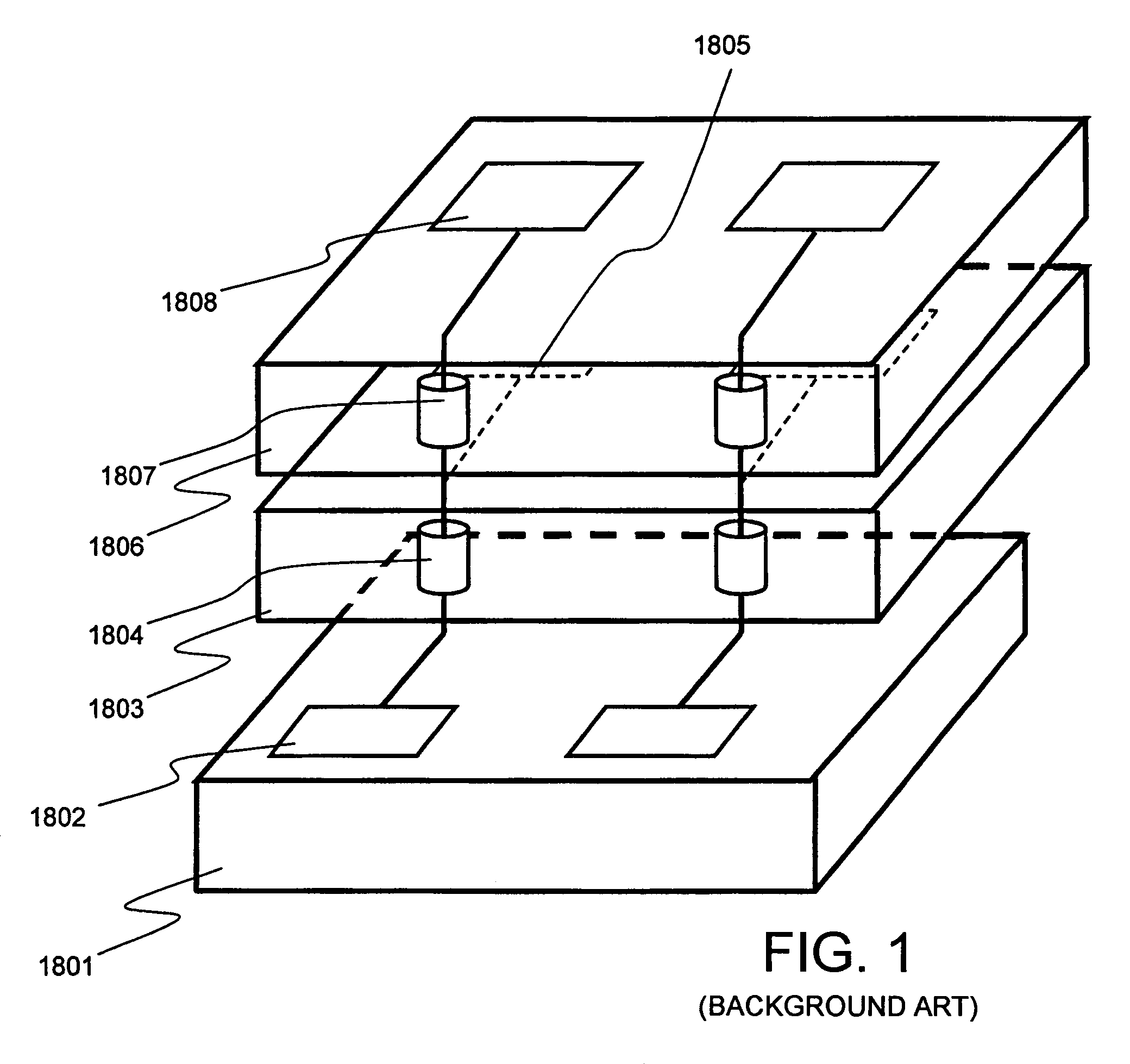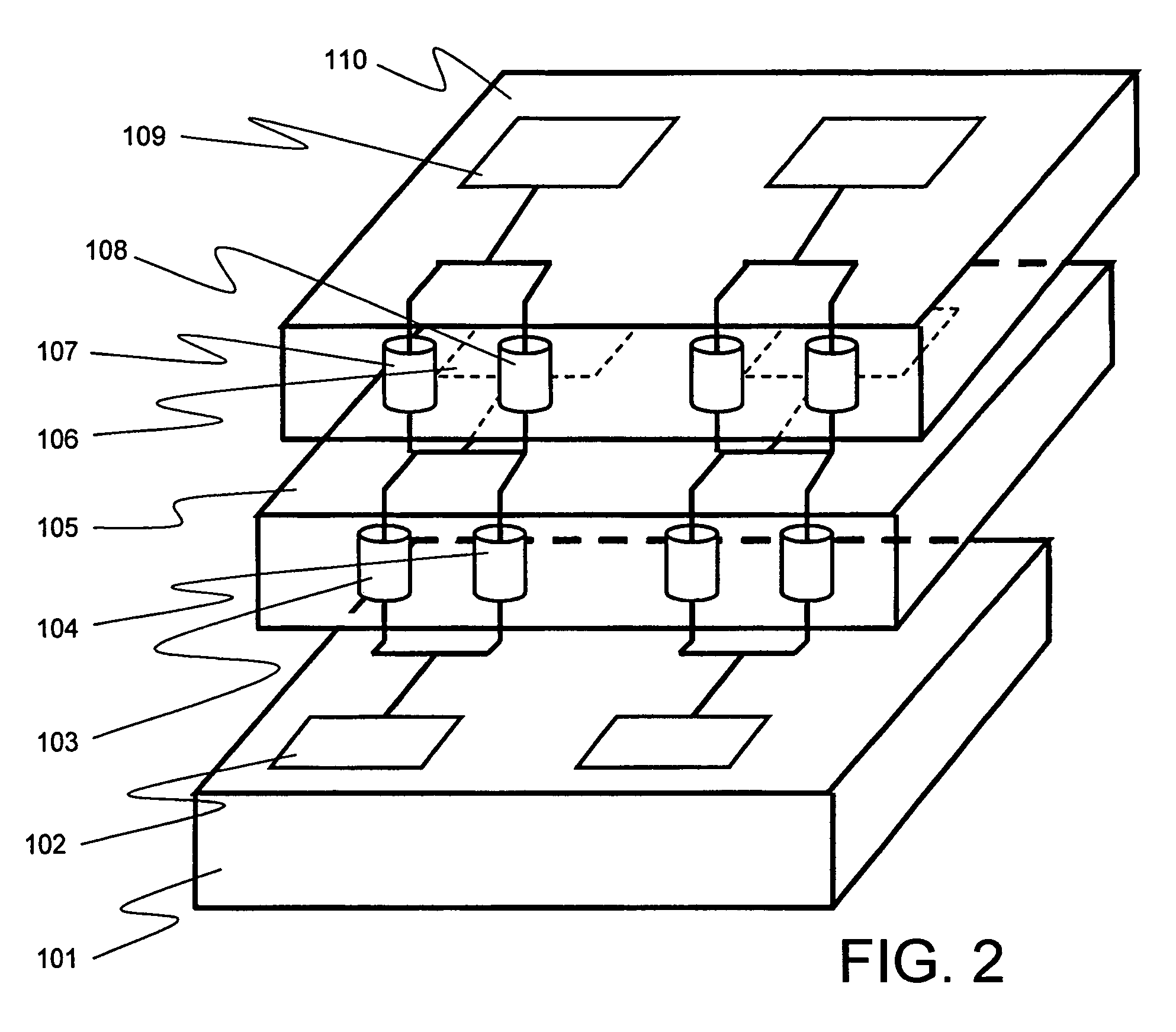Stacked semiconductor device
a semiconductor chip and stacking technology, applied in semiconductor devices, semiconductor/solid-state device details, instruments, etc., can solve the problems of limited number of bonding wires that can be used on the chip, inaccessible pads for bonding wires, and certain limitations of efforts to reduce the size of transistors used in semiconductor devices, etc., to achieve a high yield
- Summary
- Abstract
- Description
- Claims
- Application Information
AI Technical Summary
Benefits of technology
Problems solved by technology
Method used
Image
Examples
Embodiment Construction
[0039]A stacked semiconductor device according to an embodiment of the present invention as shown in FIG. 2 has three semiconductor chips 101, 105, 110. Second semiconductor chip 105 and third semiconductor chip 110 are stacked, successively in the order named, on first semiconductor chip 101.
[0040]First functional circuit 102 is disposed on first semiconductor chip 101, second functional circuit 106 on second semiconductor chip 105, and third functional circuit 109 on third semiconductor chip 110. These functional circuits 102, 106, 109 are electrically connected by through-connection 103 extending through second semiconductor chip 105 and through-connection 107 extending through third semiconductor chip 110. Backup through-connection 104 extends through second semiconductor chip 105 parallel to through-connection 103, and backup through-connection 108 extends through third semiconductor chip 110 parallel to through-connection 107. Backup through-connections 104, 108 are connected ...
PUM
 Login to View More
Login to View More Abstract
Description
Claims
Application Information
 Login to View More
Login to View More - R&D
- Intellectual Property
- Life Sciences
- Materials
- Tech Scout
- Unparalleled Data Quality
- Higher Quality Content
- 60% Fewer Hallucinations
Browse by: Latest US Patents, China's latest patents, Technical Efficacy Thesaurus, Application Domain, Technology Topic, Popular Technical Reports.
© 2025 PatSnap. All rights reserved.Legal|Privacy policy|Modern Slavery Act Transparency Statement|Sitemap|About US| Contact US: help@patsnap.com



